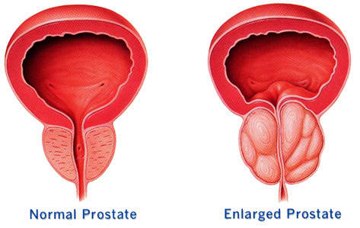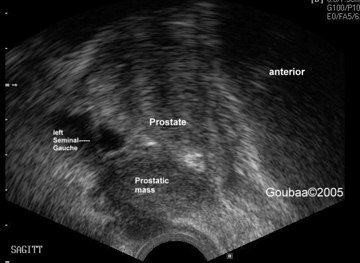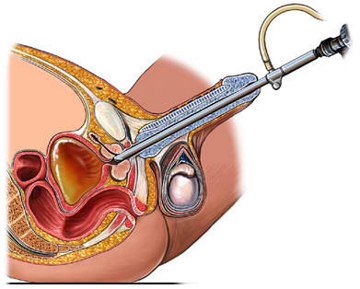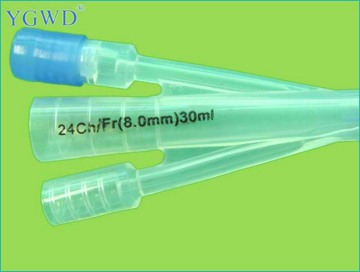Swollen Prostate – Symptoms, Pictures, Causes, Treatment, Surgery
What is Swollen Prostate?
A swollen prostate is the enlarging of the prostate gland in men. It is medically termed as benign prostatic hyperplasia that describes the increase in the cells in the prostate making it appear swollen. Benign prostatic hyperplasia (increase in cells) is interchangeably used with benign prostatic hypertrophy (increase in the size). The two are interchangeably used by urologists, although the exact mechanism is different.
When the prostate swells, it causes significant obstruction of the urethra, which passes through the prostate in men. The prostate may partially or completely impede urine flow in the urethra depending on the severity.
The presence of a swollen prostate is initially identified by manifestations in the urinary tract. Despite the swelling or enlarging of the prostate, it does not result to cancer or malignancies.
Most affected men experience swelling and enlargement beginning 30 years of age. However, histologic evidence of BPH is significantly observed in men aged 50 to 80 years old. Most men are asymptomatic, but about 40% has clinically significant manifestations.
The prevalence of swollen prostate as a result of BPH is 2.7% in men aged 45 to 49 years old and it is increased by 9 fold by 80 years of age. The prostate of men usually enlarges as they age.

Location of Prostate Gland
Image source: healingdaily.com
Symptoms of Swollen Prostate
The swelling of the prostate or enlargement of the prostate results in symptoms affecting the urination as a result of significant obstruction of the urethra. It also results in other manifestations. Symptoms include:
- Urinary frequency – The obstruction in the urethra leads to incomplete emptying of the bladder, leading to frequent need for urination.
- Urinary urgency – There is also an unavoidable need or feeling to urinate because of accumulation of urine in the bladder.
- Nocturia – Nocturia is the frequent voiding at night. The enlarged prostate distends and compresses the bladder leading to reduced volume of the bladder. This stimulates the bladder for urination.
- Urinary hesitancy – Hesitancy is the condition wherein the patient needs to wait until the urinary stream starts. This results from the obstruction in the neck of the bladder as a result of swelling of the prostate.
- Straining during voiding – Straining may also be experienced because of difficulty to pass urine.
- Urinary intermittency – There is frequent stopping of the urine stream during voiding also as a result of impediment in the urethra.
- Urinary dribbling – Urinary dribbling is the occurrence of drops in the urine and the feeling of urge to urinate following voiding.
- Dysuria – Dysuria or pain during urination may be a result of irritation in the urethra because of inflammation.
The presence of obstruction leads to stasis of urine in the bladder. This further leads to stasis of bacteria in the bladder that may lead to urinary tract infection. The stasis of urine also causes stones to develop.

Swollen Prostate
Causes of Swollen Prostate
There are vast causes of swelling of the prostate. These include:
- Benign prostatic hypertrophy or hyperplasia – As discussed earlier, the occurrence of BPH is a significant cause of swelling of the prostate. The increase in size and the increase in cells usually mimic swelling of the prostate. Benign prostatic hyperplasia results from an increase in the dihydrotestosterone levels, a metabolite of testosterone. The presence of high levels of dihydrotestosterone acts in the stromal cells of the prostate leading to activation of growth factors that causes increase in the size of the prostate. Men with high testosterone levels, for example, hairy men, may experience BPH when they get old.
- Prostatitis – Prostatitis is the inflammation of the prostate gland that results from possible infection. Presence of unmanaged urinary tract infection may spread in the prostate and cause infection in the area. The swelling that results from the infection also causes similar affectation of the urinary tract.
- Exogenous testosterone therapy – Similar to the mechanism of BPH, exogenous testosterone leads to increased circulating dihydrotestosterone as a metabolite.
Diagnosis of Swollen Prostate
Diagnosis of swollen prostate includes:
Rectal examination
The prostate can only be palpated through the rectum. A rectal exam may reveal an enlarged prostate.

Digital Rectal Examination to detect presence of swollen prostate
Blood tests
Prostate specific antigen is usually elevated in the presence of inflammation and hyperplasia of the prostate gland. Presence of severely elevated PSA may indicate malignancy of the prostate.
Ultrasonography
Ultrasound of the abdomen is also done to determine the exact size of the prostate. Ultrasound may also involve detection of the kidneys and testicles to rule out hydronephrosis or cancer cells in the genitourinary tract.

Ultrasonography to detect presence of swollen prostate
Treatment of Swollen Prostate
Treatments of swollen prostate include:
Medications
Medications are used to reduce the size of the prostate. The 5α-redcutase is responsible for converting testosterone to dihydrotestosterone. Drugs such as 5α-redcutase inhibitors may play an important role in preventing the conversion to dihydrotestosterone, thereby preventing increase in the size of the prostate. Side-effects of these medications include ejaculation problems, decrease in libido and erectile dysfunction because of the decrease in DHT needed by men. Alpha blockers are also given together with the first drug. These medications are under the class of alpha-adrenergic receptor antagonists. This is the most common drug of choice for BPH. Examples of these drugs include terazosin, doxazosin and tamsulosin. These drugs relax the smooth muscles of the bladder and prostate, thereby decreasing obstruction in the urethra. Since these drugs affect the blood vessels, it may cause hypotension as a side-effect.
Medications are the first line of treatment for swelling of the prostate.
Conservative Techniques
Non-invasive techniques include transurethral needle ablation and transurethral microwave thermotherapy. These procedures deliver energy in the prostate gland to allow for necrosis of the cells. The prostate decreases in size when necrosis happens. These procedures are usually done in an out-patient basis and patients may be able to resume activities immediately.
Surgery
Transurethral resection of the prostate may also be done. It involves the insertion of curette in the urethra to scrape the prostate. This technique is performed under general anesthesia or spinal anesthesia. Bleeding is a potential complication, so measures to prevent bleeding are employed.

Transurethral resection of the prostate
Since bleeding is the complication of TURP, a cystoclysis or three – way catheter is placed after the surgery to dissolve clots that may possibly formed.

Cystoclysis to dissolve clots after surgery
Home Remedies for Swollen Prostate
Home remedies are also available for swelling of the prostate. These include:
- Saw palmetto extract – This is an herbal preparation used to reduce the size of the prostate and prevent swelling for normal individuals. Saw palmetto also reduces symptoms associated with swollen prostate.
- Pygeum – This is also an herbal preparation extracted from Prunus Africana bark.
- Others – Other herbal preparations for swollen prostate include hypoxis rooperi, pumpkin seed, rye grass and stinging nettle. These herbal medications may control symptoms and do not have potential side-effects.